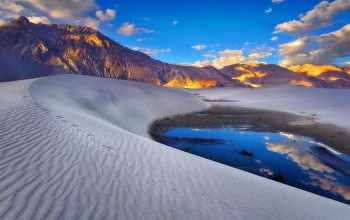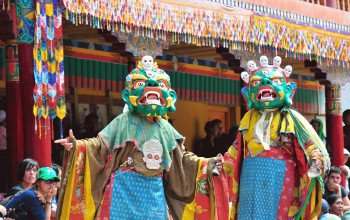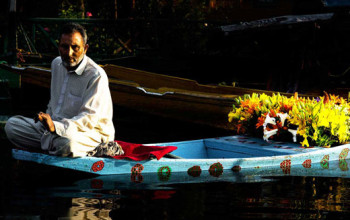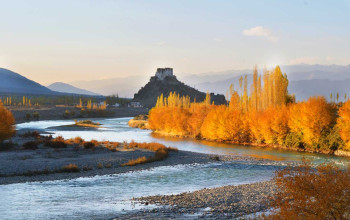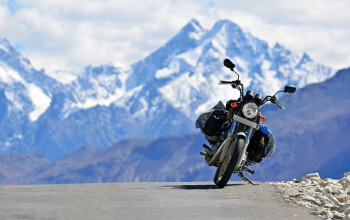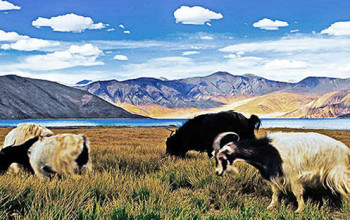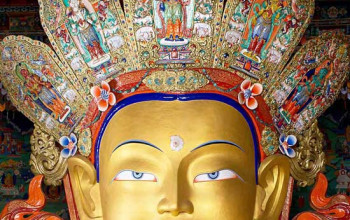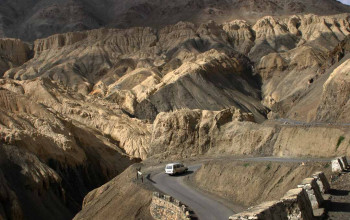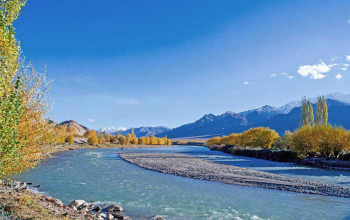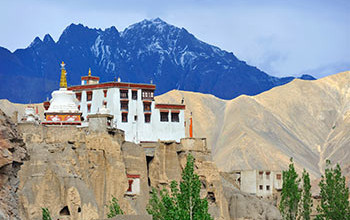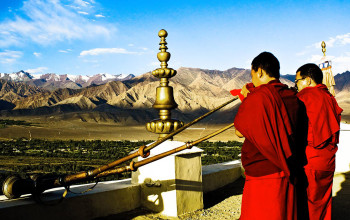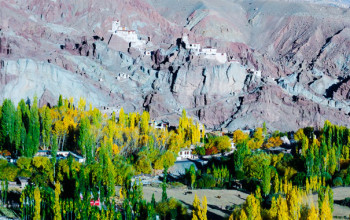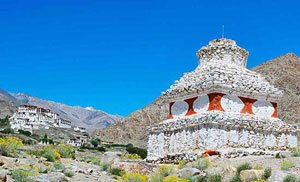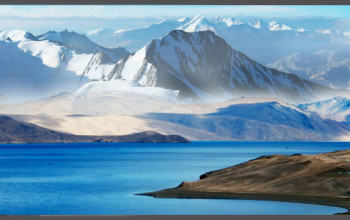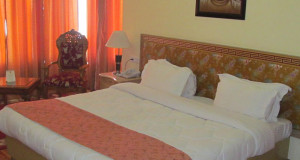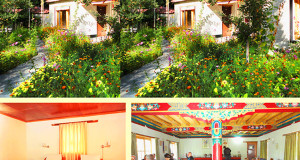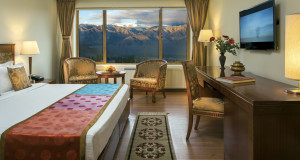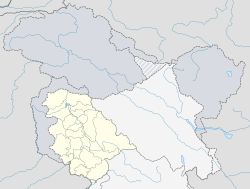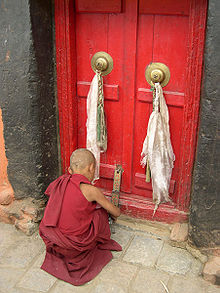| Phyang Monastery | |
|---|---|
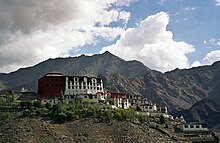 |
|
| Coordinates | 34°11′11″N 77°29′22″E |
| Monastery information | |
| Location | Fiang, Leh district, Ladakh, Jammu and Kashmir, India |
| Founded by | chosje dharma kunga takpa |
| Founded | 1515 |
| Type | Tibetan Buddhist |
| Sect | Drikung Kagyu |
| Lineage | started from vajradhara tilopa naropa marpa milaraspa gampopa phakmodrupa jigtensumgon |
| Head Lama | drikung skyabgon chetsang rinpoche (head teacher) Skyabje Toldan Rinpoche (rein. head lama) |
| Number of monks | 121 |
| Festivals |
Gang-Sngon Tsedup Festival- |
Phyang Monastery, Phyang (or Phiyang) Gompa is a Buddhist monastery located in Fiang village, just 15 or 16 kilometres west of Leh in Ladakh, northern India. It was established in 1515.
History[edit]
There are a couple of divergent traditions regarding its founding.
Others say that it was founded by king Tashi Namgyal, whose reign has been established from independent sources to have been in the third quarter of the sixteenth century. There are a number of chronological difficulties in establishing events in Ladakh at this period and it is assumed that some names have been omitted from the Chronicle either from mistakes in memory or tradition, or a deliberate attempt to eradicate some events which were thought better forgotten.[2]
The monastery is one of only two in Ladakh belonging to the Drikung Kagyu, Dri-gung-pa or Drigungpa school, one of eight schools derived from the teachings of Phakmadrupa Dorje Gyelpo (1110-1170 CE).[3][4]There are many drikung monasteries in ladakh: three main and more than thirty branch monasteries.
After the monastery was built, it specialised in Digung teachings under Skyoba Jigsten Gonbo. The current head teacher is Apchi Choski Dolma and the reincarnation of Skyabje Toldan Rinpoche is the head lama.[1]
Description[edit]
Phyang contains numerous sacred shrines inside the monastery, frescoes dating from the royal period, and a 900-year-old museum which has an extensive collection of idols including a number of fine Kashmiri bronzes probably dating to the 14th century, thangkas, Chinese, Tibetan and Mongolian firearms and weapons.[1][5]
The Gang-Sngon Tsedup Festival is held annually from 17th day to 19th day of the first month of the Tibetan calendar. On the 2nd and 3rd day of the 6th month of the Tibetan calendar Phyang serves as a venue for sacred dances.[1]
